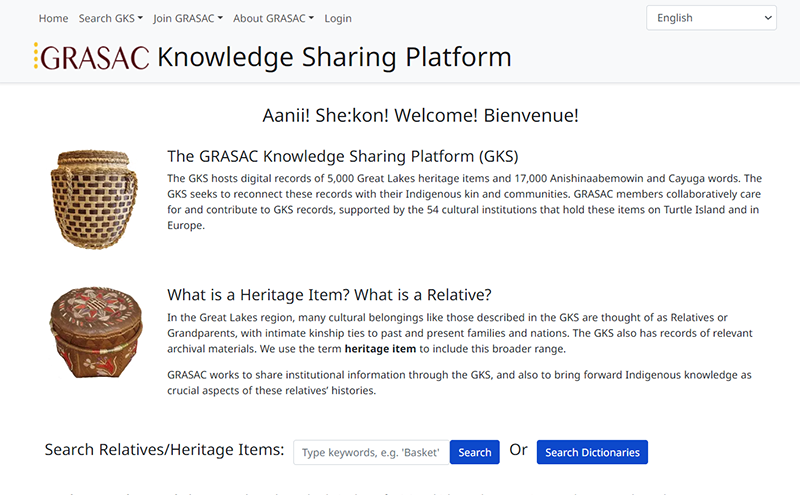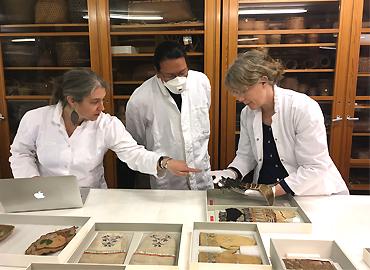The Great Lakes Research Alliance for the Study of Aboriginal Arts and Culture (GRASAC) recently launched a public platform that seeks to benefit Indigenous communities, cultural institutions and scholars alike.
The GRASAC Knowledge Sharing Platform houses digital records of 5,000 Great Lakes heritage items and two online dictionaries with 17,000 Anishinaabemowin and Cayuga words.
The site catalogues a variety of artifacts including moccasins and headdresses; tools; blankets; hunting weapons; pipes; dolls; crafts; and historic photographs and artwork.

The GRASAC Knowledge Sharing Platform provides digital access to Great Lakes cultural items held in repositories around the world.

GRASAC researchers have studied Indigenous heritage items from museums around the world, including here at Ethnologisches Museum in Berlin. Photo credit: Hannah Turner.
Every item in the platform has several image entries and a description outlining its function and how it was made. Also noted is its creation date, building materials and its current location. Entries for some materials also include a searchable map that locates the heritage item’s place of origin.
GRASAC is a multi-disciplinary research network with more than 500 members who jointly research Anishinaabe, Haudenosaunee and Huron-Wendat cultures of the Great Lakes region of Turtle Island. It is co-directed by Associate Professor Cara Krmpotich and Heidi Bohaker, an associate professor with the Department of History. The site was created through support from the Faculty of Arts & Science, the Faculty of Information and the Department of History.
Read the full article on the Faculty of Arts and Science website
